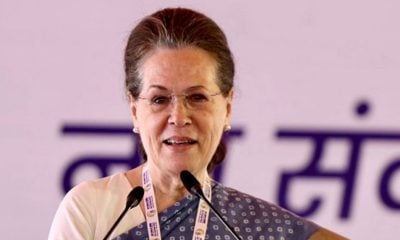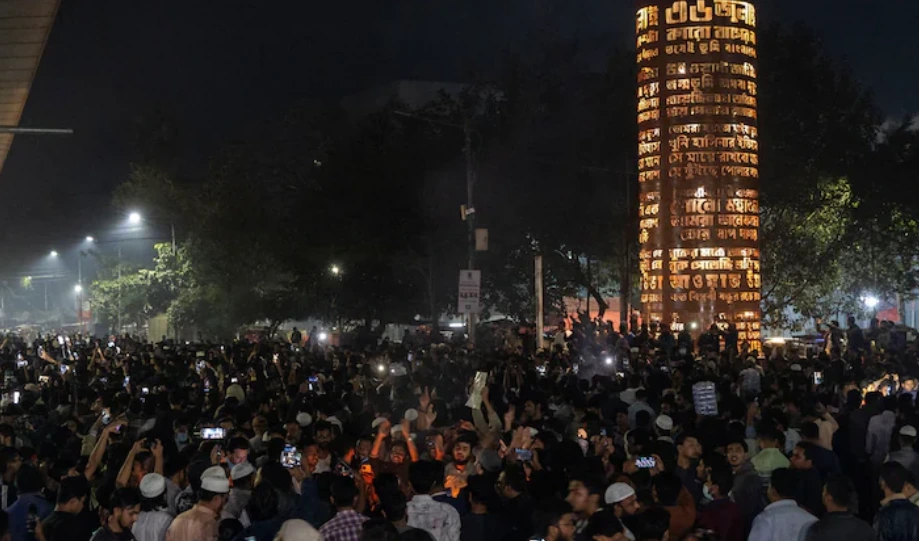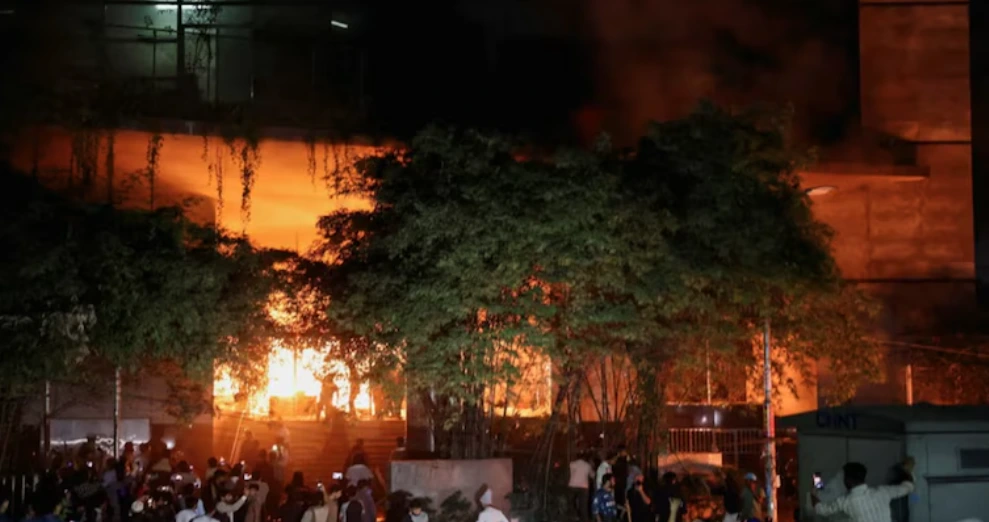[vc_row][vc_column][vc_column_text]A report by 13 US federal agencies proves President Donald Trump wrong comprehensively on climate change.
The study, “US Global Change Research Program Climate Science Special Report”, concludes that evidence of global warming is stronger than ever and that more than 90% of it has been caused by humans, contradicting the stand of senior members of the Trump administration.
The White House has sought to downplay a major climate change report, which was compiled by 13 US federal agencies, according to BBC, quoting Trump administration officials:
- A spokesman for the White House said it supported “rigorous scientific analysis and debate” but added that the climate was “always changing”.
- White House principal deputy press secretary Raj Shah said it was not certain how sensitive the Earth’s climate was to greenhouse gas emissions.
US President Donald Trump, now touring Asia, once said the concept of global warming was created by the Chinese in order to make American manufacturing less competitive. Earlier this year, he announced he was pulling the US out of the Paris Agreement to cut global emissions.
The study demolishes his arguments, even if it does not change his view. The 477-page report released on Friday said it was “extremely likely” – 95 to 100% certainty – that global warming is manmade, mostly from carbon dioxide through the burning of coal, oil and natural gas.
It also details how climate has changed and makes some apocalyptic predictions.
Global annually averaged surface air temperature has increased by about 1.8°F (1.0°C) over the last 115 years (1901–2016). This period is now the warmest in the history of modern civilization. The last few years have also seen record-breaking, climate-related weather extremes, and the last three years have been the warmest years on record for the globe. These trends are expected to continue over climate timescales.
Global average sea level has risen by about 7–8 inches since 1900, with almost half (about 3 inches) of that rise occurring since 1993. Human-caused climate change has made a substantial contribution to this rise since 1900, contributing to a rate of rise that is greater than during any preceding century in at least 2,800 years. Global sea level rise has already affected the United States; the incidence of daily tidal flooding is accelerating in more than 25 Atlantic and Gulf Coast cities.
Global average sea levels are expected to continue to rise by at least several inches in the next 15 years and by 1-4 feet by 2100. A rise of as much as 8 feet by 2100 cannot be ruled out. Sea level rise will be higher than the global average on the East and Gulf Coasts of the United States.
Changes in the characteristics of extreme events are particularly important for human safety, infrastructure, agriculture, water quality and quantity, and natural ecosystems. Heavy rainfall is increasing in intensity and frequency across the United States and globally and is expected to continue to increase. The largest observed changes in the United States have occurred in the Northeast.
Heatwaves have become more frequent in the United States since the 1960s, while extreme cold temperatures and cold waves are less frequent. Recent record-setting hot years are projected to become common in the near future. The incidence of large forest fires in the western United States and Alaska has increased since the early 1980s and is projected to further increase in those regions as the climate changes, with profound changes to regional ecosystems.
Annual trends toward earlier spring melt and reduced snowpack are already affecting water resources in the western United States and these trends are expected to continue. Under higher scenarios, and assuming no change to current water resources management, chronic, long-duration hydrological drought is increasingly possible before the end of this century.
Without major reductions in emissions, the increase in annual average global temperature relative to preindustrial times could reach 9°F (5°C) or more by the end of this century. With significant reductions in emissions, the increase in annual average global temperature could be limited to 3.6°F (2°C) or less.
The global atmospheric carbon dioxide (CO2) concentration has now passed 400 parts per million (ppm), a level that last occurred about 3 million years ago, when both global average temperature and sea level were significantly higher than today. Continued growth in CO2 emissions over this century and beyond would lead to an atmospheric concentration not experienced in tens to hundreds of millions of years. There is broad consensus that the further and the faster the Earth system is pushed towards warming, the greater the risk of unanticipated changes and impacts, some of which are potentially large and irreversible.
The observed increase in carbon emissions over the past 15–20 years has been consistent with higher emissions pathways. In 2014 and 2015, emission growth rates slowed as economic growth became less carbon-intensive. Even if this slowing trend continues, however, it is not yet at a rate that would limit global average temperature change to well below 3.6°F (2°C) above preindustrial levels.
For the first time, scientists highlighted a dozen “tipping points” of potential dangers that could happen from warming. They include the slowing down of the giant Atlantic Ocean circulation system that could dramatically warp weather worldwide, much stronger El Niños, major decreases in ice sheets in Greenland and Antarctica, which would spike sea level rise, and massive release of methane and carbon dioxide from thawing permafrost that could turbo-charge warming. ( See Full report)
Source: CSSR[/vc_column_text][/vc_column][/vc_row]


 Cricket news1 hour ago
Cricket news1 hour ago
 Latest world news36 mins ago
Latest world news36 mins ago
 India News28 mins ago
India News28 mins ago















